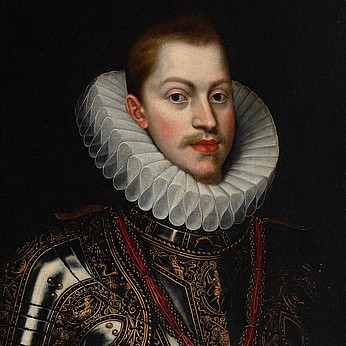Valencian school of the last quarter of the 16th century. "Procession of Benedictine Saints". Oil on panel.
Lot 63
About Seller
Setdart Auction House
Carrer Aragó 346
Barcelona
Spain
Setdart Subastas was born in 2004 and is currently the first online art auction in Spain with solidity, prestige and reliability guaranteed by our more than 60,000 users. Setdart has a young, dynamic and enterprising team ready to successfully manage the purchase and sale of art works through custom...Read more
Estimate:
EUR€6,000 - EUR€7,000
$6,250 - $7,291.67
Absentee vs Live bid
Two ways to bid:
- Leave a max absentee bid and the platform will bid on your behalf up to your maximum bid during the live auction.
- Bid live during the auction and your bids will be submitted real-time to the auctioneer.
Bid Increments
| Price | Bid Increment |
|---|---|
| EUR€0 | EUR€10 |
| EUR€200 | EUR€25 |
| EUR€500 | EUR€50 |
| EUR€1,000 | EUR€100 |
| EUR€3,000 | EUR€200 |
| EUR€5,000 | EUR€500 |
| EUR€10,000 | EUR€1,000 |
| EUR€20,000 | EUR€2,000 |
| EUR€50,000 | EUR€5,000 |
About Auction
By Setdart Auction House
Nov 24, 2021
Set Reminder
2021-11-24 09:00:00
2021-11-24 09:00:00
America/New_York
Bidsquare
Bidsquare : Old Masters, Day 1
https://www.bidsquare.com/auctions/setdart-auction-house/old-masters-day-1-7873
Setdart Auction House sofia@setdart.com
Setdart Auction House sofia@setdart.com
- Lot Description
Valencian school of the last quarter of the 16th century. "Procession of Benedictine Saints". Oil on panel. With ribbons on the back. It has some signs of woodworm. With repainting, a crack in the upper area and a tear in the lower margin. Measurements: 117 x 67 cm; 121 x 71 cm (frame). The one we present here is a monumental composition, of clear devotional character reinforced by the marked scenographic sense. It is organized in two planes, the lower earthly and the upper heavenly, clearly differentiated as usual in the Spanish school of the 16th century. The characters are accumulated in the earthly plane, with a line of Benedictine monks that go towards the front, processionally, with imploring gestures, of great pathos; the celestial plane is starred by an angel that guides them, indicating the way to salvation, placing the halo to the monk in the first instance. The Valencian school is different from the rest of contemporary Spanish artistic centers, thanks to the fact that during most of the 15th and 16th centuries there was an important settlement of Italian and Flemish painters. Thus, throughout the history of art, Valencia has been an important focus of Spanish art, along with other schools such as Andalusia and Madrid. In Valencia, the change from the seventeenth to the eighteenth century was not a break with the previous tradition, but a continuation of it. In 1768 the Royal Academy of Fine Arts of San Carlos was created, and this institution will determine a change towards a classicism of baroque roots. Through it, young artists were trained by José Vergara, Manuel Monfort, José Camarón, Vicente Marzo, Vicente López and Mariano Salvador Maella. On the other hand, the economic recovery will result in a thriving industrial and commercial bourgeoisie, which will seek to distinguish itself socially through artistic patronage. At the same time, the Church was losing its monopoly as the only client of the artists. All this will determine a definitive change in taste, and also in the genres treated: religious painting will now coexist with bourgeois portraiture, still life, landscape, historical and mythological themes and genre painting.
- Shipping Info
-
In-house shipping available. Please inquire at admin@setdart.com.
-
- Buyer's Premium



 EUR
EUR CAD
CAD AUD
AUD GBP
GBP MXN
MXN HKD
HKD CNY
CNY MYR
MYR SEK
SEK SGD
SGD CHF
CHF THB
THB

















